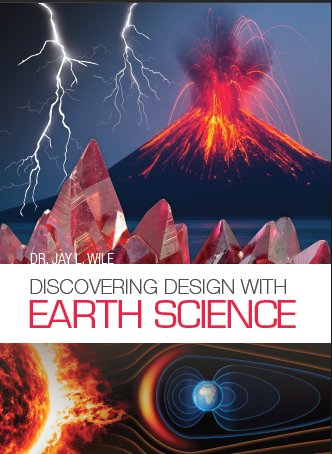 My latest book is now at the printer and should be ready in June. You can see the course description at my publisher’s website, and if you click on “Product Resources,” you can find the table of contents, the first chapter, the list of lab supplies, an overview of the experiments, and the scope and sequence. If you are interested, you can get on the waiting list to be notified as soon as it is available for purchase. I have already posted a couple of excerpts from the book, but here is another. It comes from the introduction:
My latest book is now at the printer and should be ready in June. You can see the course description at my publisher’s website, and if you click on “Product Resources,” you can find the table of contents, the first chapter, the list of lab supplies, an overview of the experiments, and the scope and sequence. If you are interested, you can get on the waiting list to be notified as soon as it is available for purchase. I have already posted a couple of excerpts from the book, but here is another. It comes from the introduction:
You have lived on the earth all your life, but you probably don’t know very much about it. As a child, you probably enjoyed digging in the dirt. But what is dirt? How is it different from rocks? How are rocks different from fossils and gems, which are usually found in rocks? You have sometimes enjoyed the weather and sometimes complained about it. But what makes the different kinds of weather you have experienced? You generally get up after the sun rises, and you have probably gazed at the stars after the sun has set. But what makes the sun rise and set? What are the stars? You will find the answers to these questions through a study of earth science, which is what I will cover in this book.
The earth is a marvel of design and complexity, because God made it. Psalm 24:1 tells us, “The earth is the Lord’s, and all it contains, The world, and those who dwell in it.” Psalm 111:2 also tells us, “Great are the works of the Lord; They are studied by all who delight in them.” I am sure that there have been times you have been delighted by the earth. I know that every time I sit on a beach or scuba dive in the ocean, I am delighted. The same thing happens when I gaze at a beautiful mountain or see constellations of stars in the night sky. Because I have been so delighted by the earth, I want to study it. I hope that this course makes you take even more delight in this planet that you call home, and I hope that it encourages you to continue studying the earth, even once you are finished with this book.

While my children were growing up I taught science classes in our home for a period of ten years, mostly using your textbooks. I enjoyed it and look back on that time with fondness. My favorite class was “Exploring Creation with Physical Science”. Both because I enjoy teaching children in that age group, and because of the wide range of interesting topics in that book. I’m sure I would enjoy teaching using your Earth Science book, for the same reasons.
Thank you, David. Thanks also for letting me know that the comments weren’t working. It was an odd bug, but I squashed it.
Would you recommend this for an incoming eighth grader who has been less enthusiastic about school, or would you recommend starting with Science in the Atomic Age? Thank you!
I would recommend Science in the Atomic Age.
Hello, Dr. Wile!
I am a former homeschooler who used your science books in high school and developed a love for it in spite of my (then) hatred of math. In fact, your books helped me to understand algebra because I finally had something meaningful to which it applied!
I am now a mother of a four-year-old, a two-year-old and an infant, and I plan to homeschool them. I would be delighted if someday my own children could use your science textbooks. In the meantime, have you ever considered writing a book for younger children? Your books are so approachable and fascinating that I just wish I could share them sooner!
Right now I have grand plans (probably a bit over the top) for spending hours and hours in nature this year to help my kiddos develop a love for the outdoors and curiosity of the things which surround them. They are so little that we will just focus on observation and enjoyment, and supplement our discoveries or questions with multitudes of picture books from the library. Any suggestions for other ideas are welcome!
Whatever you decide, thank you for sharing your enthusiasm and love of science with so many students, myself included!
Thanks for your kind words, Christy. I have an entire elementary series that covers K-6. You can see it here. I agree that in the early years, spending lots of time outdoors is a great way to introduce children to science. In fact, if you do it right, you don’t need any curriulum for the K-6 years. However, that takes a lot of creativity and time on your part. I wrote my elementary curriculum simply as another resource for those who don’t have the time and energy to use nature studies as a complete answer to their K-6 needs.